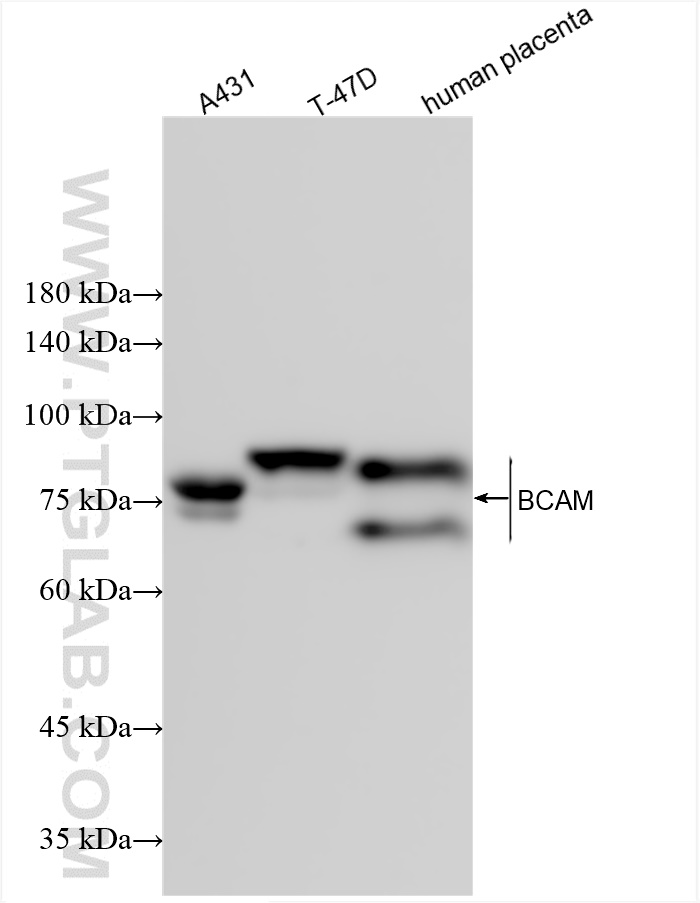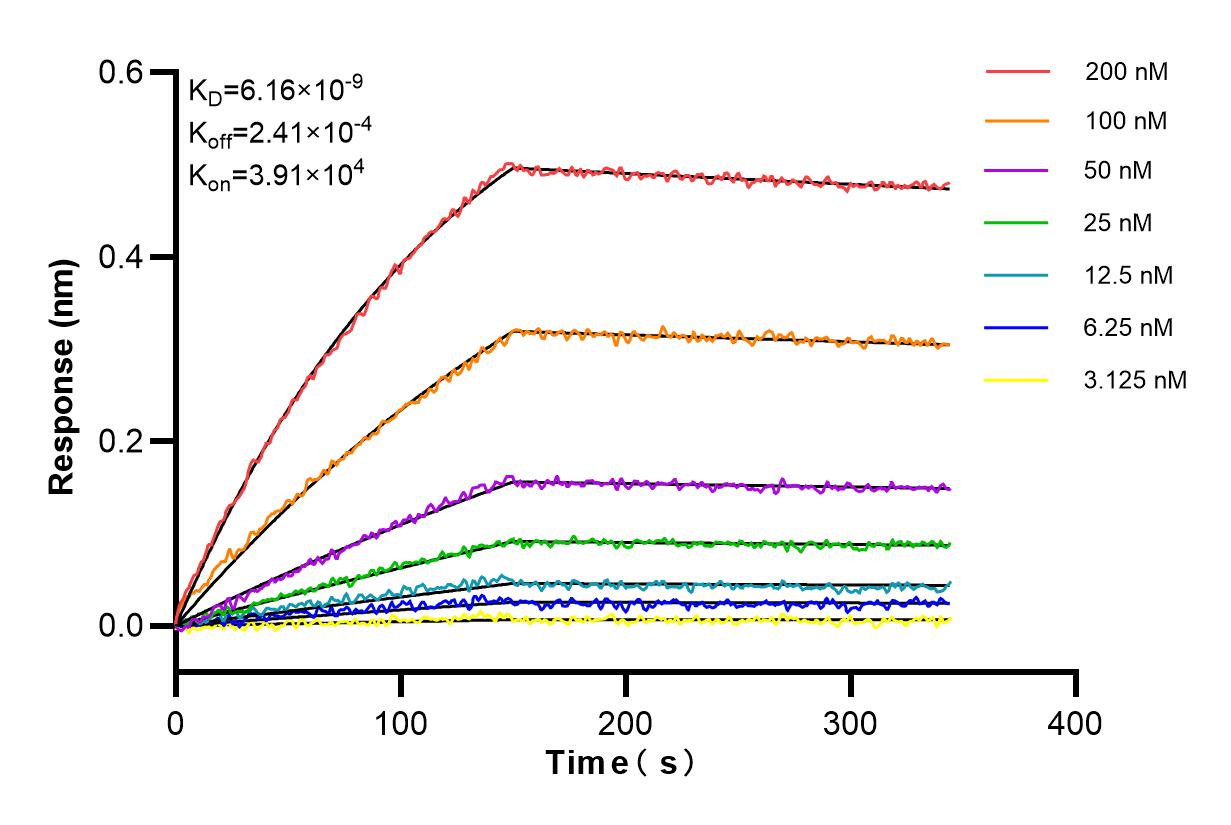验证数据展示
产品信息
84038-3-PBS targets BCAM in WB, Indirect ELISA applications and shows reactivity with human samples.
| 经测试应用 | WB, Indirect ELISA Application Description |
| 经测试反应性 | human |
| 免疫原 | BCAM fusion protein Ag28181 种属同源性预测 |
| 宿主/亚型 | Rabbit / IgG |
| 抗体类别 | Recombinant |
| 产品类型 | Antibody |
| 全称 | basal cell adhesion molecule (Lutheran blood group) |
| 别名 | F8/G253 antigen, CD239, B-CAM cell surface glycoprotein, Basal cell adhesion molecule, Auberger B antigen |
| 计算分子量 | 67 kDa |
| 观测分子量 | 67 kDa, 78-85 kDa |
| GenBank蛋白编号 | BC050450 |
| 基因名称 | BCAM |
| Gene ID (NCBI) | 4059 |
| 偶联类型 | Unconjugated |
| 形式 | Liquid |
| 纯化方式 | Protein A purfication |
| UNIPROT ID | P50895 |
| 储存缓冲液 | PBS only , pH 7.3 |
| 储存条件 | Store at -80°C. The product is shipped with ice packs. Upon receipt, store it immediately at -80°C |
背景介绍
Basal cell adhesion molecule (Lu/BCAM) is a membrane-bound glycoprotein of the immunoglobulin superfamily (IgSF), functioning as a receptor for the extracellular matrix protein, laminin. BCAM (Lutheran/basal cell-adhesion molecule, a glycoprotein) belongs to the immunoglobulin superfamily which contains both Lu blood group and BCAM tumor-associated antigens. Proteomics analysis suggests that BCAM might be a potential biomarker for pancreatic cancer (PMID: 19199705). BCAM, involved in cell adhesion and migration, can also promote tumor metastasis and has been elucidated to play a functional role in the metastasis of thyroid cancer and gastric cancer (PMID: 10728810, 35941663). De-glycosylated BCAM has a preidicted molecular weight of 67 kDa. Two BCAM glycoprotein (gp) isoforms are present on human RBCs, Lu (85 kDa) and Lu(v13) (78 kDa); they result from the alternative splicing of intron 13 and differ by the lengths of their cytoplasmic domains (PMID: 23160466).

